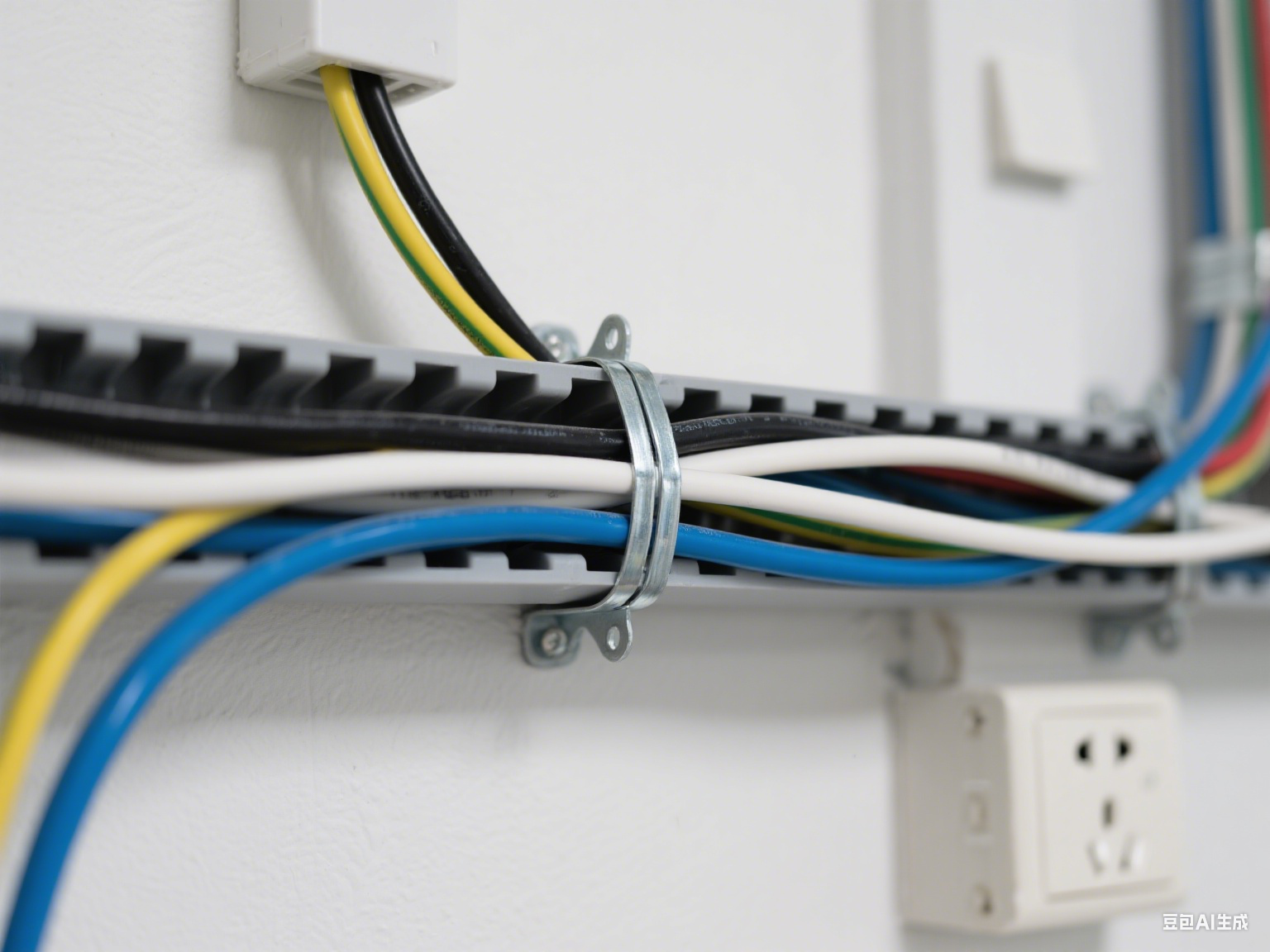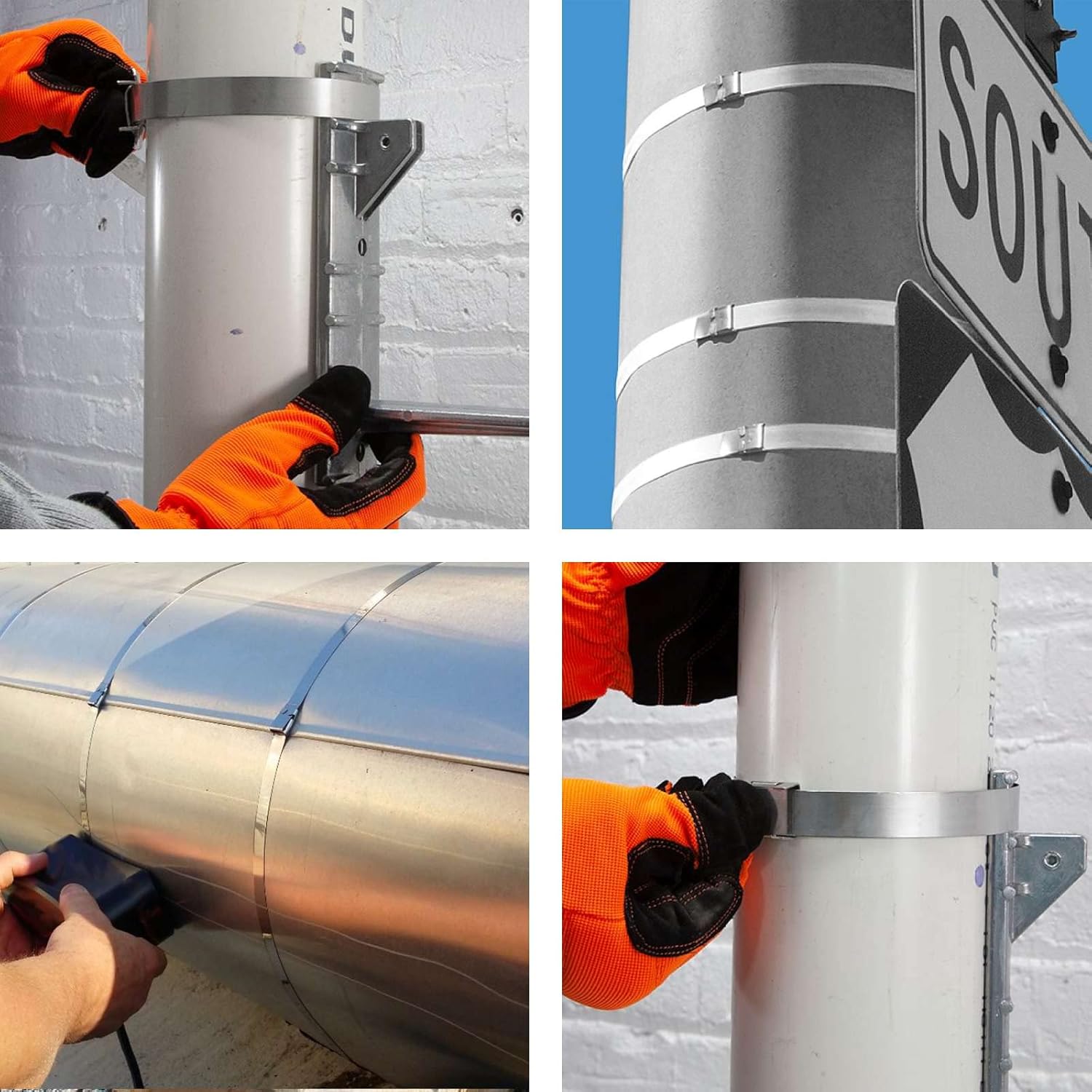Stainless steel cable ties and stainless steel buckles stand out for their unmatched durability and reliability in industrial applications. They excel in harsh environments, often outperforming plastic and nylon alternatives. I find that opting for stainless steel ties can lead to long-term cost savings and significantly reduce maintenance efforts.
Key Takeaways
- Stainless steel cable ties offer unmatched durability, lasting over 20 years, making them a reliable choice for harsh environments.
- These ties excel in extreme temperatures, operating effectively from -328°F to 1000°F, unlike nylon ties that only withstand up to 250°F.
- Stainless steel cable ties are recyclable, promoting sustainability, while plastic ties contribute to waste and are not recyclable.
Composition and Properties of Stainless Steel Cable Ties
When I consider the composition and properties of stainless steel cable ties, I find that their performance is largely attributed to the materials used in their construction.
Material Strength
Stainless steel cable ties exhibit remarkable material strength, making them suitable for demanding applications. The primary grades of stainless steel used in these ties include 304 and 316. Both grades offer a tensile strength of approximately 600 MPa (150 lbs). However, 316 stainless steel stands out due to its enhanced corrosion resistance, thanks to the addition of molybdenum. This makes it particularly ideal for marine and chemical environments.
| Material | Tensile Strength (lbs) |
|---|---|
| Stainless Steel | Up to 250 |
| Plastic (varies) | 18 to over 250 |
Corrosion Resistance
Corrosion resistance is another critical property of stainless steel cable ties. They can withstand various types of corrosion, including:
- Pitting Corrosion
- Stress Corrosion Cracking
- Galvanic Corrosion
The ASTM G48 standard evaluates the pitting and crevice corrosion resistance of stainless steels. This method involves constant-temperature immersion in ferric chloride solutions, which helps determine how well the ties will perform in corrosive environments. I have seen firsthand how stainless steel ties, especially those made from 316 stainless steel, maintain their integrity in marine settings, unlike plastic ties that degrade over time due to moisture and salt exposure.
Temperature Tolerance
Temperature tolerance is another area where stainless steel cable ties excel. They can operate effectively in extreme temperatures, ranging from -328°F to 1000°F (-80°C to +538°C). In contrast, nylon cable ties typically have a maximum operating temperature of only up to 250°F (121°C). This significant difference allows stainless steel ties to be used in applications where high heat is a concern, such as in fire-resistant structures.
| Type of Cable Tie | Maximum Operating Temperature |
|---|---|
| Stainless Steel | -328°F to 1000°F |
| Nylon | Up to 250°F |
In my experience, the ability of stainless steel cable ties to withstand extreme temperatures without losing their mechanical properties is crucial for ensuring the safety and reliability of various projects.
Applications of Stainless Steel Cable Ties Across Industries
 less steel cable ties find extensive applications across various industries due to their exceptional properties. I have observed their effectiveness in several sectors, including manufacturing, construction, and marine environments.
less steel cable ties find extensive applications across various industries due to their exceptional properties. I have observed their effectiveness in several sectors, including manufacturing, construction, and marine environments.
Manufacturing
In the manufacturing sector, stainless steel cable ties play a crucial role in ensuring the secure organization of components. I often see them used in industries that require precise management, such as aerospace and telecommunications. Here are some common applications:
- They secure cables and wires in drilling rigs, pipelines, and refineries within the oil and gas industry.
- In electrical panels and junction boxes, they withstand high temperatures, ensuring safety and reliability.
- HVAC systems benefit from their ability to secure ductwork and pipes, even in extreme conditions.
- In food manufacturing and pharmaceuticals, these ties meet stringent hygiene and durability standards, often used in cleanroom environments.
The versatility of stainless steel cable ties makes them indispensable in manufacturing settings. They comply with various safety and regulatory standards, such as UL Certification and ISO 9001:2015, which ensure product quality and safety.
| Standard | Description | Importance |
|---|---|---|
| UL Certification | Verifies safety and performance under defined conditions. | Confirms resistance to temperature extremes, UV exposure, and flame. |
| ISO 9001:2015 | Ensures consistent processes for product quality. | Increases process consistency and reliability. |
| ISO 14001:2015 | Focuses on environmental responsibility. | Encourages responsible use of energy and raw materials. |
| ISO 45001:2018 | Sets requirements for safe working environments. | Promotes proactive risk identification and mitigation. |
Construction
In construction, stainless steel cable ties are essential for securing various materials. I appreciate their ability to generate thousands of pounds of tension when securing items. This feature is vital for preventing goods from falling during transportation. Here are some advantages of using stainless steel cable ties in construction:
- They hold irregularly shaped bundles securely, minimizing the risk of scattering.
- Their superior strength and corrosion resistance make them ideal for harsh environments.
- They withstand extreme temperatures and harsh chemicals, ensuring durability.
- Their longevity reduces the need for frequent replacements, which minimizes operational downtime.
The estimated market share of stainless steel cable ties in the construction industry is approximately 40%. This demand stems from the need for durable solutions in challenging environments, particularly for securing cables and wires.
Marine and Outdoor Use
Stainless steel cable ties excel in marine and outdoor applications due to their resistance to saltwater and corrosive elements. I have seen them used effectively on boats and ships, where they secure cables, wires, and hoses in areas exposed to saltwater. Here are some key benefits:
- They resist corrosion, ensuring longevity in harsh marine environments.
- Their average lifespan in outdoor applications ranges from 15 to 20 years, with a failure rate of less than 12% in coastal sites.
- They provide reliable solutions for securing equipment and materials in outdoor settings, where exposure to the elements is a concern.
In my experience, the durability and reliability of stainless steel cable ties make them a preferred choice for various applications across industries.
Benefits of Using Stainless Steel Cable Ties
Stainless steel cable ties offer numerous benefits that make them a preferred choice for various applications. I have seen firsthand how these ties enhance project outcomes through their longevity, cost-effectiveness, and positive environmental impact.
Longevity and Reliability
One of the standout features of stainless steel cable ties is their impressive longevity. In my experience, these ties can last for decades, even in harsh environments. This durability contrasts sharply with plastic cable ties, which typically last only a few years, especially outdoors.
- Stainless Steel Cable Ties: Last for 20 years or more.
- Plastic Cable Ties: Generally last 1-2 years outdoors due to poor weather resistance.
The strength of stainless steel ties is another factor contributing to their reliability. They are 5-10 times stronger than nylon ties, making them ideal for applications requiring high tensile strength. I often recommend stainless steel ties for projects where safety and durability are paramount.
| Failure Mode | Examples | Effect | Precautions |
|---|---|---|---|
| Corrosion from Chlorides | Sodium chloride, seawater | Causes pitting and crevice corrosion, especially in SS304 grades. | Use SS316-grade ties for marine environments. |
| Degradation from Sulfur Compounds | Hydrogen sulfide, sulfuric acid | Degrades the protective chromium oxide layer, leading to corrosion. | Industries at risk include petroleum refineries. |
| High-Temperature Oxidizing Environments | Combustion byproducts | Weaken stainless steel over time due to extended exposure. | Use high-temperature-rated stainless steel ties. |
Cost-Effectiveness
When considering the total cost of ownership, stainless steel cable ties prove to be a cost-effective solution. Although the initial purchase price is higher than that of nylon ties, the long-term savings are significant.
| Type | Cost per Unit | Lifespan (Years) | Cost per Year | Replacement Frequency |
|---|---|---|---|---|
| Nylon Cable Tie | $0.10 | 2 | $0.05 | 5-10 times in 5 years |
| Stainless Steel Tie | $1.00 | 20 | $0.05 | 1 time in 20 years |
I have observed that the longer lifespan of stainless steel ties often outlasts the project itself. In contrast, nylon ties may require frequent replacements, which increases overall costs. The initial higher cost of stainless steel ties is offset by fewer replacements and reduced maintenance efforts.
Environmental Impact
The environmental impact of using stainless steel cable ties is an important consideration. While stainless steel ties take longer to degrade, they can be recycled at scrap metal facilities, making them a sustainable option.
- Stainless steel cable ties can be processed indefinitely through existing recycling infrastructure.
- Nylon cable ties, on the other hand, are not recyclable and should be disposed of in household waste.
I recognize that while stainless steel ties pose a challenge for environmental processing due to their longer degradation time, their recyclability offers a significant advantage over plastic alternatives. This aspect aligns with my commitment to promoting sustainable practices in industrial applications.
Stainless steel cable ties are a superior choice for various industrial applications. Their durability and reliability significantly reduce maintenance costs. I have seen firsthand how they excel in harsh environments, offering corrosion resistance and tensile strength that surpass plastic alternatives.
- Consider these benefits:
- Long lifespan of over ten years outdoors.
- Resistance to extreme temperatures and chemicals.
- Ideal for a wide range of environments.
I encourage you to consider stainless steel ties for your next project to ensure reliability and performance.
Post time: Sep-23-2025







